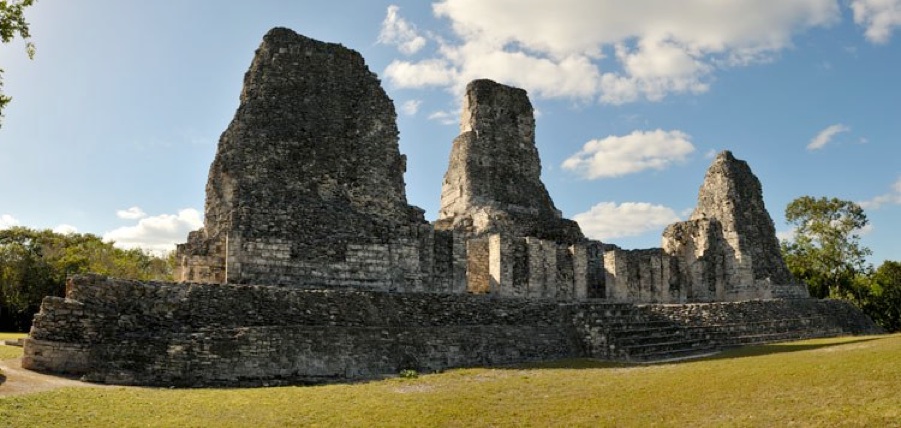After visiting Balamku, we visited Xpuhil. Xpuhil is a small site. Xpuhil also felt very quiet and peaceful. The site has 3 temples (at least that is all I noticed): Temple IV and then Temple II and then finally the main attraction - Temple I.
According to the INAH sign, the archaeologists named this site Xpuhil because of the vegetation (cattail; in Yucatec Mayan: xpuhil) that grows around the site. The site was composed of 17 building groups, of which only 3 temples are excavated today. The Mayans used the Rio Bec architectural style in building Xpuhil, which incorporates the geographical location of the site and false steps leading up tall narrow towers/pyramids. According to the INAH sign at the entrance to Becan, The Rio Bec architectural style combines those styles known as Peten and Chenes. The Rio Bec style is characterized by: using well cut stone blocks covered afterwards with a smooth layer of stucco; rounded corners on the temples; wide interior benches; high towers and false temples are embedded in the principal buildings; the vaults are made with projecting stone slabs (the beginning of the raised arch). The most common decorative motif are the cross-shaped elements and the masks of Itzamna (also called the Earth Monster). Xpuhil peaked during the period 500-750 A.D., with the Mayans abandoning the site around 1,100 A.D.
According to our friend William, Xpuhil’s actual Mayan name was “Stu Jibil”, which means “ground hog”.
For additional photos and information, please see the following links:
http://mayanruins.com/xpuhil.html
http://www.mayanbeachgarden.com/Xpuhil.html
I would especially like to thank Ed Barnhart of the MAYA EXPLORATION CENTER for e-mailing me a map of Xpuhil to refresh my memory of the site. Thanks Ed!





